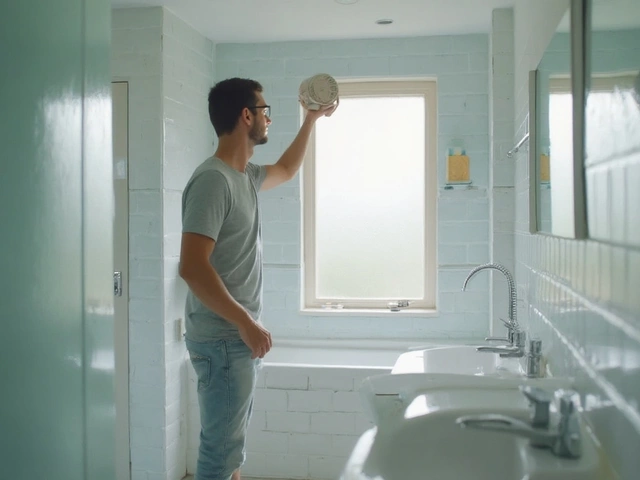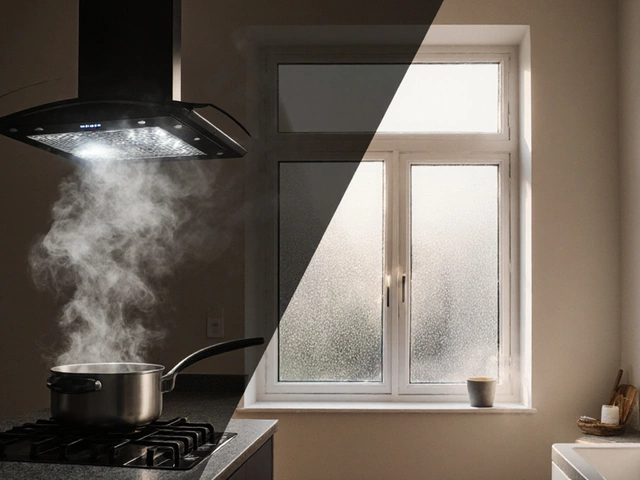Ever sat in a steamy bathroom, wondering if that humming in the corner is doing its job—or close to retirement? Extractor fans are quiet heroes in homes, but most people only notice them when they rattle, sputter, or quit, right when you need them most. So, how much life is tucked inside that plastic casing spinning above your shower or stove? Are you one of those guessing if it’ll last a few more years or go out tomorrow? Here’s what you need to know, and it might surprise you just how long—or short—the ride can be.
What Determines the Life Expectancy of an Extractor Fan?
The common story you’ll hear is that extractor fans should last around ten years, but the range actually swings much wider depending on several variables you probably haven’t considered. Not all extractor fans are built equally; cheap units can burn out after just three years, while good-quality ones, like those from Panasonic or Broan, tend to cross the decade mark comfortably if they’re cared for. Here’s the nitty-gritty: build quality, frequency of use, environment, installation, and maintenance matter as much as brand.
Fans installed in kitchens face a tougher job than those in half-baths. Grease, smoke, and microscopic food particles take a toll on kitchen extractor fans, clogging them and forcing their motors to work harder. In bathrooms, you’ve got endless moisture, which, if ignored, can rust components and cultivate mold inside the fan housing. Fans that grind through high humidity or heavy air pollution will wear out faster than those operating in pristine, dry settings. Physically, most extractor fans are built with bronze or ball-bearing motors. Models with sealed ball bearings generally last longer because they resist moisture and dust.
Another quiet killer? Incorrect installation. Fans that haven’t been sealed properly, or that vent into attic spaces instead of outside, burn out quickly—not to mention create nasty air quality problems for the whole house. Voltage fluctuations from inconsistent power supply or faulty wiring also shorten their lifespan. Ever notice your lights flicker when the fan runs? That’s a red flag.
If you’re wondering about the official lifespan figures, you’ll find most reputable manufacturers put their fans through at least 30,000 hours of run-time testing—that’s equal to running the fan for one hour every day for more than 80 years! But real-life is messier: cycling on and off multiple times a day, sometimes clogged with dust, other times fighting off cooking fumes, all puts stress nowhere close to those sample conditions.
Bottom line? The expected lifetime for a frequently-used, mid-range extractor fan is around five to ten years, skewing on the higher side if it’s top quality and regularly cleaned. But in guest bathrooms or little-used kitchens, they may chug along for fifteen years or more.
Common Signs Your Extractor Fan Is Nearing The End
No one likes maintenance surprises, especially when they involve pulling apart a fan coated with a decade’s worth of bathroom gunk. To avoid that, you want to spot early warning signs. First, listen: modern extractor fans shouldn’t whine, screech, or rattle, so if your fan changes its tune, don’t ignore it. Odd noises signal bearing problems or loose mounting, either of which can lead to failure.
If your windows fog up even when the fan is running, or the room remains damp, the fan probably isn’t removing air at full strength anymore. This decline in performance usually means the motor’s weakening, the blades are coated with grime, or the exhaust duct is clogged. Try holding a piece of tissue paper near the intake grill—if it flutters weakly (or not at all), you’ve got airflow issues. Strange smells—burnt or musty—can indicate fried wires or mold in the housing. These are your fan’s way of quietly screaming for help.
Sometimes, fans simply won’t turn on, or they trip your breaker as soon as you hit the switch. That’s often a sign of a dead motor, bad capacitor, or an internal short. If you’re constantly having to flip the breaker back, stop running the fan: this is how house fires start. Any signs of melted plastic, exposed wiring, or visible sparking should convince anyone it’s time for a replacement rather than a patch job.
It’s easy to ignore these warning signs if the fan is still moving air, but letting it limp along can lead to bigger problems. I’ve seen plenty of folks just shut the door on a weak fan, thinking, “I’ll deal with that later,” only for mold to creep up the bathroom walls, or kitchen cabinets yellowed from years of damp, grubby air.

How Maintenance and Habits Influence Longevity
You’d be amazed at how much longer an extractor fan will last if given five minutes of attention every few months. Dust and lint—sometimes mixed with greasy air—are the number one cause of seized-up motors and rattly housings. A quick clean of the grill with a brush or a quick vacuum can nearly double the machine’s useful life. Once a year, especially in kitchens, pop open the cover, unplug the fan, and wipe down the blades with a damp cloth. For bathroom fans, check the venting pipe or hose for lint clogs, especially if it shares space with a laundry room.
If you live where there’s high humidity, or if you take lots of long showers, wiring your bathroom fan to an automatic timer or humidity sensor helps. The fan continues running after you leave, clearing out moisture so mildew doesn’t settle in, and then shuts itself off—no overheated motors from running for hours by accident. Many of the new energy-efficient models also include “smart” sensors that know exactly when the air’s clear, taking the guesswork out of it.
How often do you use the fan? Every day, for every shower? Only when cooking big meals or frying food? Naturally, the more frequently a fan runs, the sooner its components wear out, but strategic use actually does more good than harm. Letting air stagnate because you’re “saving” the fan often leads to costlier moisture damage in the long run. So, don’t be shy about running it during every shower or stir-fry session, but stay on top of cleaning and make sure nothing’s blocking the vents.
For anyone with pets: fur and dander can clog extractor fans quickly. If you see dust “beards” hanging from the vent, time for a clean. Also make it routine to check ductwork (if accessible) for any nests or blockages—lost birds or wasps love sneaking into unprotected vents. Every year or so, check to see if rain caps or exterior grills haven’t rusted through or come loose. It takes just one storm for water to get in and wreck the motor completely.
Choosing and Replacing Your Extractor Fan: When Is It Time?
Let’s face it: replacing an old, failing extractor fan is rarely at the top of anyone’s to-do list. But if your fan’s showing any of those warning signs, or you can’t remember when it was installed, it’s smart to start scouting for a new one before you lose clean air in your home. Modern extractor fans run quieter, move more air, and sip less electricity. Look for features like ball-bearing motors rated for high moisture, backdraft dampers to prevent cold air from rushing in, and easy-clean housings that pop open with a single screw. Leading brands like Panasonic, Broan-NuTone, and Air King consistently score high in consumer reviews—something to keep in mind if you dislike surprises.
To figure out what size you need, check the cubic feet per minute (CFM) rating. Too small, and your bathroom stays muggy; too big, and you’re wasting energy without added benefit. For a medium bathroom, a 70-90 CFM model usually does the trick. For kitchens, especially those with gas stoves or heavy frying, look for higher-powered fans—150 CFM and up. When swapping in a replacement, check if your ductwork is clear and doesn’t have any sharp bends that impede airflow. The most common rookie mistake is ignoring the venting. Always make sure your fan pushes air outside—not into an attic, wall cavity, or crawl space.
If you’re comfortable with DIY projects, a straightforward fan swap takes under an hour, but always kill power at the breaker. If the wiring looks suspect, or the ducting is corroded, call a licensed electrician or HVAC pro. And if you’re on the fence about whether to repair or replace an extractor fan, remember this: if your fan is more than ten years old, or repairs add up to half the price of a shiny new one, go new. You’ll get better performance, cleaner air, and likely quieter operation—while spending less on electricity. Even if you’re handy, double check local regulations; some cities require professional installation for bathroom and kitchen venting jobs, especially if you’re cutting new vents or dealing with older aluminum wiring.
So, how long does an extractor fan last? Most people get about a decade if they buy a solid brand, install it right, and take care of it—the trifecta for the best bang for your buck. Want to stretch that lifespan? Clean the thing, use it wisely, and don’t ignore little problems. Your lungs—and your house—will thank you many times over.




